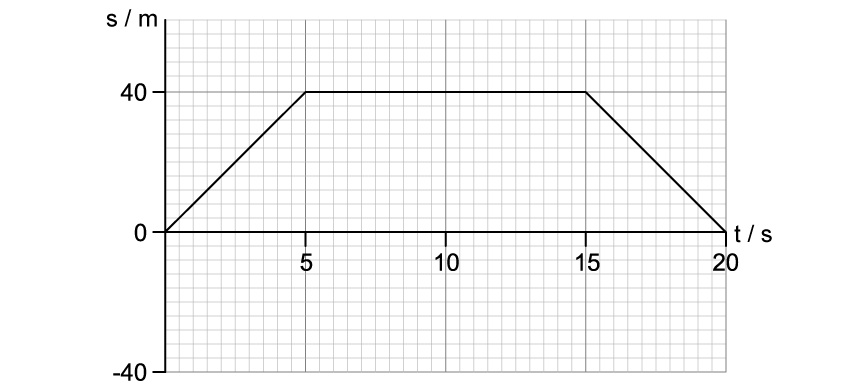The projectile path taken by an object with air resistance is a shorter horizontal distance to that without air resistance.
The effects of air resistance could be decreased by a projectile with a
Larger surface to volume ratio
Trajectory at a lower altitude
Choose your answer A B C D
View Answer
Next Question
The graph shows the variation with time of the velocity of a car of fixed mass.
What can be deduced from the graph?
The car is never stationary
The car is always moving backwards
The car is always accelerating
The acceleration of the car is in the opposite direction to its velocity after time t
Choose your answer A B C D
View Answer
Previous Question Next Question
An object of mass 5.6 g is falling vertically at a constant speed in air.
What is the approximate magnitude of the drag force acting on the object?
Choose your answer A B C D
View Answer
Previous Question Next Question
A stone is released from a hot air balloon moving upwards with a uniform velocity of 25 m s–1 .
If the hot air balloon is 30 m high when the stone was dropped, what is its height when the stone hits the ground?
Choose your answer A B C D
View Answer
Previous Question Next Question
An object moves through one compete circle from point W to X to Y to Z and finally to W again.
The distance between X and Z is 6 km.
Which row is correct about the displacement and distance of the object?
Displacement / km
Distance / km
A.
0
9π
B.
0
6π
C.
6π
0
D.
6π
9π
Choose your answer A B C D
View Answer
Previous Question Next Question
The graph shows the variation of acceleration a of an object with time t .
Which graph shows how the velocity v of the object varies with t ?
Choose your answer A B C D
View Answer
Previous Question Next Question
A student throws a stone with velocity 3 m s–1 at an angle θ to the vertical from the surface of a lake. Air resistance can be ignored. The acceleration due to gravity is g .
What is the angle θ
You may use the fact that sin 30 = 0.5.
Choose your answer A B C D
View Answer
Previous Question Next Question
A particle moving in a straight line has the displacement–time graph shown.
Which row is correct about the average speed and average velocity of the particle?
Average speed / m s–1
Average velocity / m s–1
A.
0
4
B.
0
2
C.
4
0
D.
2
16
Choose your answer A B C D
View Answer
Previous Question Next Question
An object is released from rest near the surface of the Earth and allowed to fall freely.
Which of the following correctly describes the speed and acceleration before the object reaches terminal velocity?
speed acceleration
A.
remains constant
remains constant
B.
remains constant
decreases
C.
increases
remains constant
D.
increases
decreases
Choose your answer A B C D
View Answer
Previous Question Next Question
A ball starts from rest and moves horizontally. Five positions of the ball are shown at time intervals of 0.50 ms. The horizontal distance between X, the initial position, and Y, the final position, is 0.060 m.
What is the average acceleration of the ball between X and Y?
Choose your answer A B C D
View Answer
Previous Question





